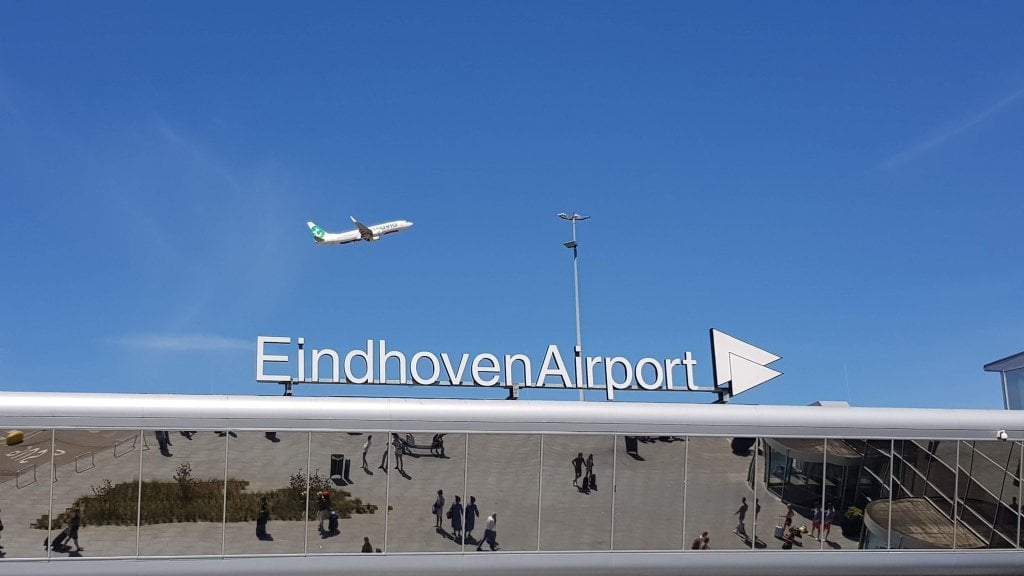
An airport facilitates the economny, but also is a business in itself. To remain relevant and economically viable, it needs to grow. At least, that’s what common sense is telling us. But then, there’s the environment. There’s climate change and there are neighbours who are tired of the noise and air pollution. Many airports around the world are in the same debate: how can we survive as a business, but also work on sustainability? Rens Mulder looks at possible solutions for one of those: Eindhoven Airport. His views might be an inspiration for other airports as well.
When it comes to Eindhoven Airport, the conversation almost automatically is about growth. The airport’s annual report states that “further growth of Eindhoven Airport will be necessary to realise the ambitions of the region” (Eindhoven Airport, 2018). The question is, however, whether growth in the number of flights should be the starting point in a world in which climate change is more defining than ever. Perhaps the airport should change its function completely. What will the airport of the future look like?
A completely sustainable airport. Is that really possible? Flying is almost by definition an unsustainable way of moving around. Flying itself already causes enormous emissions of CO2 and NOx. Add to this the fact that the vast majority of Eindhoven Airport’s passengers come by car or are picked up and dropped off, and you arrive at a considerable extra emission per passenger.
Electric flights seem the perfect solution. Fewer emissions and quiet aircrafts that limit inconvenience to local residents. By generating sustainable energy with solar panels along the runways, one could recharge the fleet on site. It all sounds wonderful, but unfortunately, we’re still a long way from there.
Batteries are currently still too heavy to carry passenger flights efficiently. By way of comparison: one kilo of kerosene currently produces fifty times more energy than one kilo of battery (RTL Z, 2018). Easyjet, in cooperation with startup Wright Electric, is currently the only major airline that sees electric flying as a serious option. They are talking about a first hybrid (not even fully electric) scheduled service in 2027. Large companies such as Airbus and Boeing do not see this as a serious option at all, as long as batteries do not become better (less heavy) (RTL Z, 2018).
“…This way, Eindhoven airport can become the most sustainable airport in the world, without even one plane leaving…”
So what should the sustainable airport of the future look like? Perhaps in the future, an airport should no longer be an airport at all, but rather a kind of multimodal hub with the most advanced technical gadgets. Fast autonomous connections with other hubs such as industrial estates, surrounding municipalities and railway stations. The very best virtual reality (VR) meeting facilities that can replace physical movement. An ‘experience centre’ where you can explore virtual city trips all over the world. Hyperloop connections to a European network of other fast trains. It’s an imagination that suits the smartest region in the world. A testing ground of what Brainport has to offer in terms of high-tech and design. In this way, Eindhoven airport can enter the history books as the first and most sustainable airport in the world, without even one plane leaving.
Increasing economic competitiveness and attractiveness by limiting the number of flights: it sounds crazy, but companies are looking for sustainable alternatives to flying. “We want to fly less, but we do a lot of business abroad, so we can’t do without it” is a common anecdote. Out of guilt, CO2 is increasingly being compensated for employees who fly all over the world for meetings. It’s great of course, but that doesn’t make flying itself any less polluting. Companies do want to reduce the number of flying hours, but this is difficult if you also want to operate internationally.
“Continuous growth in the number of flights is not the answer to everything. There are other ways of growing”
An Eindhoven “Airport” 2.0 with fast (train) connections to major European cities and a super-realistic VR experience for (virtually) attending meetings in less accessible or more distant areas can offer a solution. Multinationals that want to operate sustainably will want to establish themselves in Eindhoven because they can then operate CO2-neutrally as a multinational all over the world. Three birds with one stone: Less CO2 emissions, less (noise) nuisance for the residents in the area and a better image for companies in the Eindhoven region that make use of this.
Continuous growth in the number of flights is not the answer to everything. There are other ways of growing, which may not be at the expense of local residents or the environment. Eindhoven Airport without flights may not be realistic, but achieving growth without actually increasing the number of flights is an important alternative to which little attention has been paid so far. It is time for Eindhoven Airport to look beyond its own backyard. Time for a sustainable Eindhoven “Airport” 2.0, which fits the smartest region in the world!
This contribution by Rens Mulder previously appeared as a blog post (in Dutch) on Brabantadvies.nl. Rens Mulder is city geographer and data analyst at the Brabant Centre for Sustainable Development Telos.
The article was written in response to the ‘from outside to inside’ working group of the “Proefcasus Eindhoven Airport”. At the invitation of Pieter van Geel, independent explorer “Proefcasus Eindhoven Airport”, and the Ministry of Infrastructure and Water Management, the Young Professionals Brabant (part of BrabantAdvies) were asked what a sustainable innovative Eindhoven Airport could look like in 2030.
Sources (in Dutch):
Eindhoven Airport. (2018). Eindhoven Airport: Annual report 2017.
Proefcasus Eindhoven Airport (2019). About the trial case.
RTL Z (2018, 29 October). Easyjet is working on an electric plane for Amsterdam-London.

